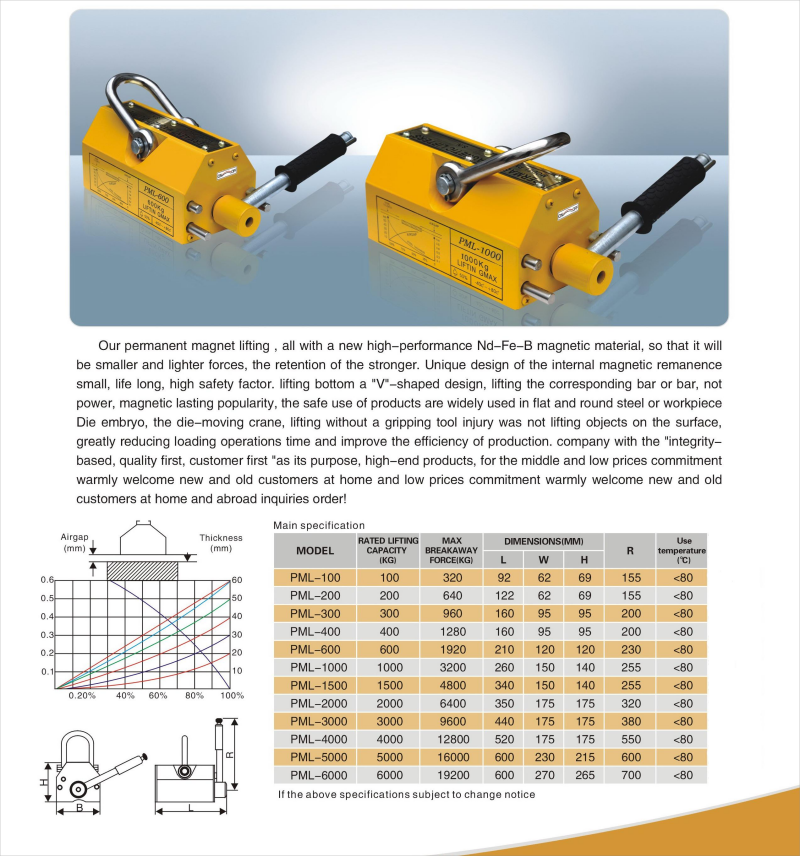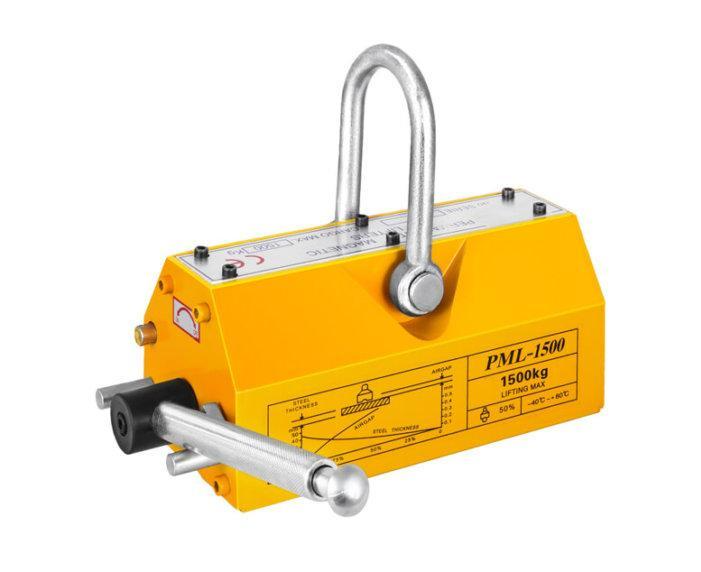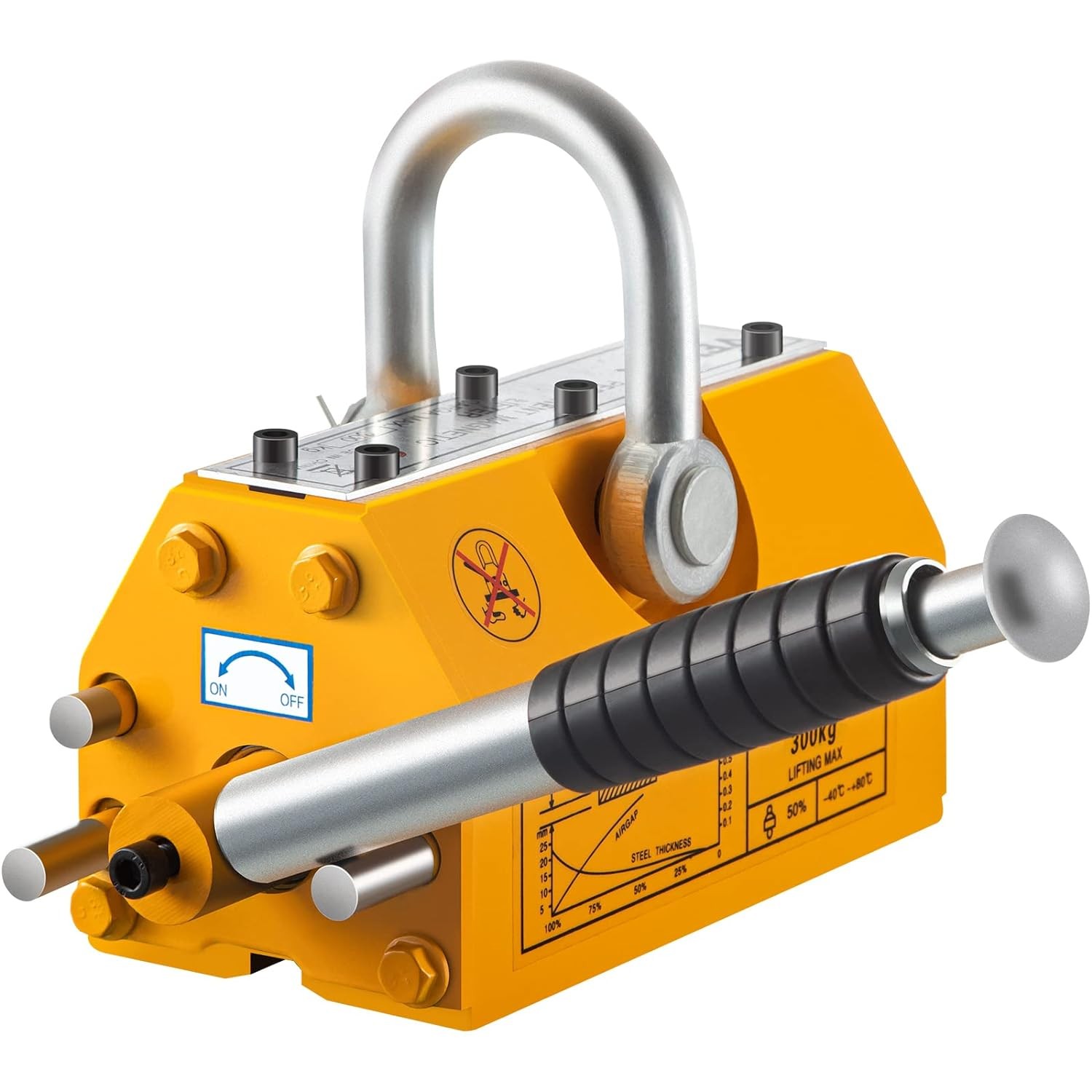Magnetic Lifter
Lifting magnets, also known as magnetic lifters or magnetic lifting systems, are specialized devices designed to lift and transport ferromagnetic materials such as steel plates, bars, sheets, and scrap metal. These powerful magnets utilize the principles of electromagnetism to provide a safe and efficient solution for handling heavy loads in various industrial environments.
Here's an introduction to lifting magnets:
1. Construction:
- Lifting magnets typically consist of a magnetic core, usually made of high-strength rare-earth magnets or electromagnets, enclosed in a robust steel housing. The housing often includes handles or lifting eyes for attachment to lifting equipment such as cranes or hoists.
- Some lifting magnets incorporate additional features such as safety mechanisms, control systems, and durable coatings for protection against corrosion and wear.
2. Functionality:
- When activated, the magnetic field generated by the lifting magnet attracts ferromagnetic materials to its surface, securely holding them in place.
- Lifting magnets can be turned on and off manually or through remote-controlled systems, allowing for precise control over the lifting and releasing of loads.
- These magnets are typically designed to lift materials in a vertical orientation, but some models can also handle horizontal or angled lifting depending on their design and capabilities.
3. Applications:
- Lifting magnets are used across a wide range of industries including steel fabrication, construction, shipbuilding, automotive manufacturing, recycling, and material handling.
- They are employed for tasks such as loading and unloading steel plates and beams, handling metal components during fabrication and assembly, lifting scrap metal in recycling facilities, and moving heavy machinery and equipment.
4. Benefits:
- Increased productivity: Lifting magnets allow for quick and efficient handling of heavy materials, reducing manual labor and improving workflow efficiency.
- Safety: By eliminating the need for manual lifting and handling of heavy loads, lifting magnets help reduce the risk of workplace injuries and accidents.
- Versatility: Lifting magnets can be easily attached to different types of lifting equipment and adapted to various lifting applications.
- Cost-effectiveness: They offer a cost-effective solution for handling heavy materials compared to alternative methods such as slings, chains, and hooks.
5. Considerations:
- Proper training and adherence to safety protocols are essential when operating lifting magnets to ensure safe handling of loads and prevent accidents or injuries.
- It's important to select the appropriate lifting magnet for the specific application, taking into account factors such as load capacity, material thickness, surface condition, and environmental conditions.
Overall, lifting magnets are invaluable tools for lifting and handling ferromagnetic materials in industrial settings, providing a safe, efficient, and cost-effective solution for material handling tasks.

INQUIRY
CATEGORIES
LATEST NEWS
CONTACT US
Contact: Esme
Phone: +86-15906564908
E-mail: esme@super-magnets.com
Add: 403, Building 1, No. 818 Jinyuan Road, Yinzhou District, Ningbo,Zhejiang, China


